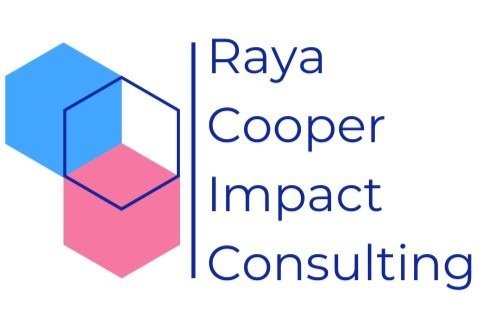The importance of tying it all together
Your impact report is a journey, and your job as author is to bring your audience along for the ride. No matter if you are reporting ESG metrics, Philanthropic giving, or outcomes of funded programs, if your report is hard to navigate and doesn’t tell a story, you are going to lose your reader. And then what is the point?
There are many ways to engage a reader - snazzy images and effective graphic design are crucial. But I’m not an expert on graphic design, I will leave that for someone else. Instead, what I can tell you about is how to use the content itself to keep your audience engaged.
When I am reading an Impact Report, one of the first things I look for is some kind of framework, either in narrative or graphic-form. Why do I look for it? Well, for one thing, it makes it easier for me to follow the flow of what you’re telling me. But it also tells me a few other important things —
I want understand know why you’re engaging in this work from a purpose and goals perspective. What are you trying to accomplish? And is the choice of activities grounded in any kind of theory or evidence?
I want to know why you’ve chosen this particular set of activities and why it matters to your business. For example, if you sell coffee products, then your social impact ought to be connected to what’s material for the business. I wouldn’t be surprised if you had a position about climate change, agricultural practices or labor practices. I would be surprised if you were focused on global dental health or the welfare of domestic pets. What your company or organization has chosen to focus on isn’t random, and as the reader, I want to have some insight into that.
Lastly it tells me that there is some strategy – you aren’t just haphazardly spinning up initiatives because they sound cool or because of a pet project - there is a reason why you’ve chosen these particular foci and it's part of your value add.
Frameworks that provide the information above, also have an additional benefit. They help create context and a mental map for the reader to absorb what may be dense and extensive information. It becomes easier to navigate your report if I can place myself in your story and understand how it all fits together, and makes the difference between a report that tells a story and a report that is text and disembodied facts and figures.
There are many types of frameworks that a company can use in their impact report, but these are three most common that I’m seeing.
Table of Contents
Theory of Change
Materiality Assessment
Table of Contents
A Table of Contents barely seems like a framework, but in fact, when used well it can tell the reader a lot about the company’s orientations. Plus, it's automatically an organizational and scaffolding structure for your report. But what can get lost in a Table of Contents approach is the tie-back to mission, purpose and business value, and companies may have to take extra steps to connect it for the reader.
PepsiCo Foundation uses their Table of Contents to tell us what their focus areas are, and then leverage color coordination to help the reader navigate the flow of information
They include a separate page address mission and vision of foundation activities separately.
Theory of Change
Twillio lays out a modified, audience-friendly Theory of Change that lays out the goal of CSR activities, and then informs the following section headings to guide the reader.
A Theory of Change traditionally is found in the foundation and nonprofit space. According to the Annie E. Casey Foundation, a “Theory of Change can describe both a conceptual model for how change will happen as well as a product that documents such a model. Generally a theory of change should clearly distinguish the actions to be undertaken from the change to be realized – including along-the-way changes and long-term goals”. [I do want to make an aside here that a theory of change explicitly acknowledges that intention (what we do) is not the same as impact (outcome). The act of giving $100 to charity isn’t impact, it’s intention for impact. Impact is what happens once the money reaches the right recipient, it is in-fact what they need and they are able to use it.]
Section header refers back to “Approach to social Change”.
Materiality Assessment
Materiality Assessments are dominant in the ESG and Sustainability space. “A materiality assessment is designed to help you identify and understand the relative importance of specific ESG and sustainability topics to your organization. This involves looking at a variety of factors through two particular lenses: potential impact on your organization and importance to stakeholders” (Conservice, ESG)
Subsequent sections explicitly address topics deemed most material to the business and stakeholders in Room & Board’s materiality assessment.
Including a framework asks us to reframe and reconsider how and what we report. It reconnects to the goals and purpose for the work. Rather than being about us and what we did, it moves us into a purpose-driven learning space where we can stay focused on what we are trying to accomplish, and aligns the company with greater purpose rather than a tactical set of initiatives.
Regardless of what you chose, the goal of any of these is to clearly articulate what matters to the business and your stakeholders, and offers a structure to the reporting itself. Including a framework will level up any impact report if it helps connect narrative and figures back to the mission and vision of the company or organization.






